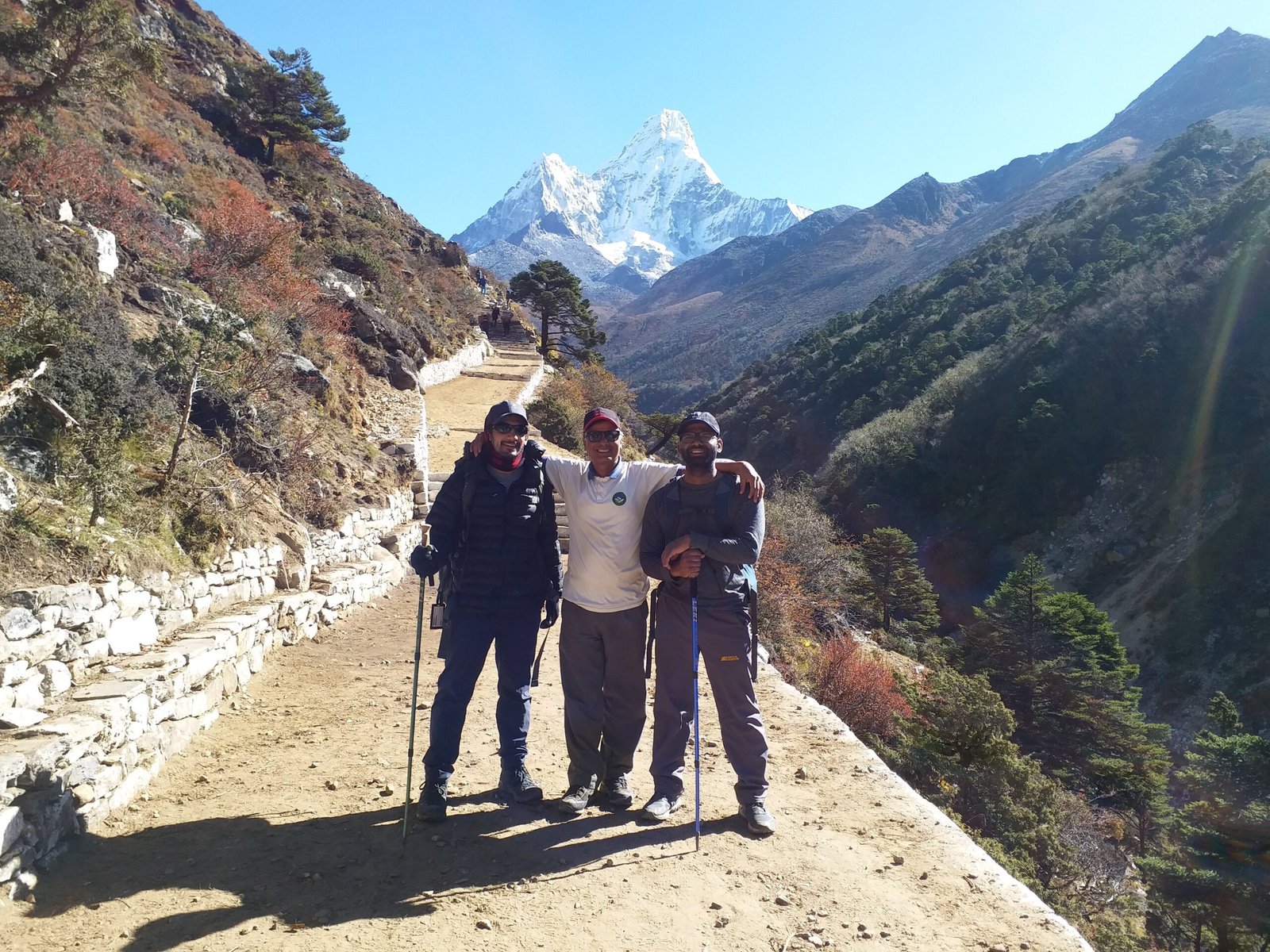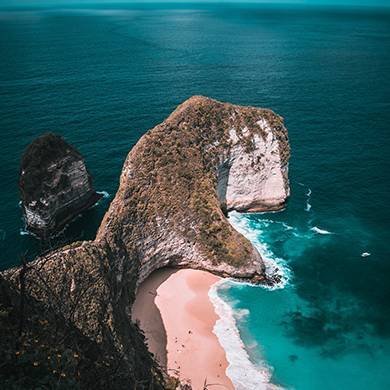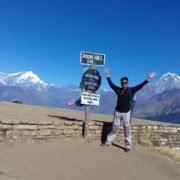
Trekking in Nepal FAQs – Best Trekking Agency in Nepal
Introduction
Trekking in Nepal FAQs –Mountain King Treks – Best Trekking Agency in Nepal
Trekking in Nepal is more than just walking through mountains — it is a life-changing adventure where breathtaking Himalayan landscapes blend with centuries-old cultures and warm local hospitality. Every year, thousands of trekkers dream of standing beneath the world’s highest peaks — Everest, Annapurna, Manaslu, Langtang, Dolpo, Mustang, and Kanchenjunga — and experiencing the spirit of the Himalayas.
Before setting out, travelers naturally have many questions: Do I need a guide? What permits are required? When is the best time to trek? How difficult are the trails?
That’s why we created this Trekking in Nepal FAQs guide. With over three decades of experience, Mountain King Treks is proud to be recognized as the Best Trekking Agency in Nepal, trusted worldwide for safety, professionalism, and unforgettable Himalayan journeys.
About Mountain King Treks – The Best Trekking Agency in Nepal
Mountain King Treks and Expedition Pvt. Ltd is more than just a trekking company. It is a story of passion, dedication, and lifelong service to adventure tourism in Nepal.
Our founder, Mr. Govinda Prasad Sapkota, is a veteran of the Nepalese adventure tourism industry with over 35 years of experience. His journey is both inspiring and deeply rooted in the mountains. Starting from the very bottom as a porter, he carried loads across high Himalayan trails, learning every detail of trekking life from the ground up. Over time, through hard work and determination, he became a guide, team leader, and organizer, before finally establishing Mountain King Treks to share his expertise and vision with the world.
Today, Mr. Sapkota is recognized as one of Nepal’s adventure tourism specialists, combining local knowledge, cultural understanding, and decades of field experience. Under his leadership, Mountain King Treks has become known for:
- Professional and caring guides and staff
- Deep respect for local culture and traditions
- A strong focus on safety and acclimatization
- Authentic, tailor-made itineraries
- Exceptional customer care and lifetime memories
When you trek with Mountain King Treks, you don’t just book a package — you join a family guided by the wisdom of someone who has lived and breathed the mountains from the ground up.
General FAQs About Trekking in Nepal
1. Do I need a guide for trekking in Nepal?
Yes. For most trekking regions, a licensed guide is highly recommended, and in restricted areas such as Manaslu Circuit Trek, Upper Mustang Trek, Dolpo Trek, and Kanchenjunga Circuit Trek, a guide is mandatory. Guides ensure safety, help with acclimatization, handle logistics, and enrich your cultural experience with local knowledge.
2. Can I trek solo in Nepal?
Solo trekking is possible in major trekking regions like the Everest Base Camp Trek and the Annapurna Circuit Trek. However, it is not always recommended. Some trekkers have lost their way on remote trails, and in the event of an emergency, support can be difficult without local knowledge. Having a professional guide from a government-registered trekking agency like Mountain King Treks ensures you receive correct advice, safety support, and reliable information throughout the journey. In restricted regions such as Manaslu, Upper Mustang, Dolpo, and Kanchenjunga, trekking with a licensed guide is mandatory.
3. What trekking permits do I need?
Permits depend on the trekking route. Common ones include:
- TIMS Card (Trekkers Information Management System)
- Conservation Area or National Park Permits such as ACAP (Annapurna), MCAP (Manaslu), or Sagarmatha NP (Everest)
- Restricted Area Permits (RAP) for Manaslu, Upper Mustang, Dolpo, and Kanchenjunga
Mountain King Treks arranges all required permits on your behalf, so you don’t need to worry about paperwork.
4. What kind of accommodation is available on treks?
- Tea house trekking: Available in Everest, Annapurna, Langtang, and Manaslu, with basic lodges offering beds, meals, and sometimes hot showers.
- Camping trekking: Required in remote regions such as Upper Dolpo Trek, Kanchenjunga Trek, Rara Lake Trek, or Great Himalayan Trail. Mountain King Treks provides a full camping crew including cook, porters, and kitchen team.
5. What type of food can I expect?
In tea houses, meals are simple but nourishing: dal bhat (rice and lentils), Tibetan bread, momos, noodles, soups, potatoes, and pancakes. Western meals like pasta and omelets are also available. On camping treks, Mountain King Treks’ private kitchen staff prepares fresh, hygienic, and varied meals, including tea/coffee, soups, desserts, and hot drinks every day.
6. How difficult are treks in Nepal?
Trek difficulty varies depending on altitude, trail conditions, and duration:
- Easy Treks: Ghorepani Poon Hill Trek, Everest View Trek, Mardi Himal Trek (lower section)
- Moderate Treks: Annapurna Circuit Trek, Manaslu Circuit Trek, Langtang Valley Trek
- Strenuous Treks: Everest Base Camp Trek, Gokyo Lakes Trek, Annapurna Base Camp Trek
- Challenging Treks: Upper Mustang Trek, Upper Dolpo Trek, Kanchenjunga Trek, Great Himalayan Trail
7. What is the best season to trek in Nepal?
- Spring (March–May): Rhododendron forests bloom, temperatures are mild, and skies are clear.
- Autumn (September–November): The most popular season with stable weather, crystal views, and cultural festivals like Dashain and Tihar.
- Winter (December–February): Cold but quieter, suitable for lower-altitude treks like Ghorepani Poon Hill.
- Monsoon (June–August): Rainy, but regions like Upper Mustang and Dolpo remain good choices because they lie in the rain shadow.
8. Do I need travel insurance?
Yes. Comprehensive travel insurance is mandatory for trekking in Nepal. Your policy should cover:
- High-altitude trekking (up to 6,000 m depending on your trek)
- Helicopter evacuation in case of emergencies
- Overseas medical treatment
- Trip delays and cancellations
9. What should I pack for trekking in Nepal?
Essentials include:
- Layered clothing (base layer, fleece, down jacket, waterproof shell)
- Strong trekking boots
- Warm sleeping bag
- Trekking poles
- Gloves, hats, socks
- Sun protection (sunglasses, sunscreen, lip balm)
- Rain gear
- First aid kit & personal medications
- Water purification tablets or filter
👉 Check our full Trekking Packing List for Nepal.
10. Is internet and phone coverage available?
In popular trekking regions like Everest and Annapurna, many tea houses offer Wi-Fi (for a small fee) and mobile network coverage (NCELL/NTC). In remote treks like Dolpo, Mustang, and Kanchenjunga, connectivity is very limited. Mountain King Treks guides carry satellite phones for emergency communication.
11. Do I need prior trekking experience?
Not always. Easy and moderate treks like Everest View Trek, Ghorepani Poon Hill Trek, or Langtang Valley Trek are suitable for beginners with average fitness. However, strenuous and challenging treks like Manaslu Circuit, Everest Base Camp, or Upper Dolpo require prior trekking experience and good physical preparation.
12. How safe is trekking in Nepal?
Nepal is considered one of the safest countries for travelers. Nepali people are famously kind, hospitable, and always ready to help visitors. Trekking is safe when properly planned, but the mountains require respect and preparation. To reduce risks, Mountain King Treks provides:
- Licensed, experienced guides who give correct advice on altitude and trail conditions
- Emergency support and evacuation assistance if needed
- Well-planned itineraries that include acclimatization and rest days
- A caring team that treats trekkers like family
With the right preparation and guidance, trekking in Nepal is not only safe but also a deeply rewarding experience.
13. Can I charge my electronic devices on the trek?
Yes, in most tea house trekking regions such as Everest, Annapurna, Langtang, and Manaslu, you can charge mobile phones, cameras, and other devices. However, lodges usually charge a small fee per device or per hour. In remote areas and camping treks, charging facilities are very limited. For convenience and to save costs, it is a good idea to bring your own small travel solar panel or power bank to keep your devices charged throughout the journey.
14. What cultural experiences can I expect while trekking in Nepal?
Nepal is as rich in culture as it is in mountains. Along the trails, you will encounter:
- Buddhist monasteries, prayer flags, mani walls, and chortens in Everest, Manaslu, and Mustang
- Traditional Gurung and Magar villages in Annapurna
- Tibetan-influenced communities in Dolpo and Mustang
- Local festivals depending on the season
Trekking with Mountain King Treks allows you to experience these traditions respectfully and authentically.
Region-Specific FAQs – Trekking in Nepal
Everest Region
Q: How high is Everest Base Camp?
Everest Base Camp is located at 5,364 m, while nearby Kala Patthar (5,545 m) offers the most stunning panoramic views of Mount Everest and surrounding peaks.
👉 Explore our Everest Base Camp Trek Itinerary.
Q: How long is the Everest Base Camp Trek?
Typically, the trek takes 12–14 days of trekking, plus arrival and departure days in Kathmandu. The exact duration depends on the itinerary and acclimatization stops.
👉 View the Everest Base Camp 14 Days Trek.
Q: What is the best time to trek to Everest Base Camp?
The best seasons are spring (March–May) and autumn (September–November) for stable weather and clear skies. Winter is possible but very cold, and the summer monsoon season is not ideal.
Q: Is Everest Base Camp Trek difficult?
It is a moderate to strenuous trek, requiring long walking days and proper acclimatization. No technical climbing is needed, but good fitness is essential.
Q: Are there shorter treks in the Everest region?
Yes. Trekkers short on time can choose the Everest View Trek (9 days), which reaches Namche Bazaar and the famous Everest View Hotel for stunning Himalayan vistas.
👉 Discover the Everest View Trek.
Q: Can I combine Everest Base Camp with Gokyo Lakes?
Yes, the Everest Base Camp via Gokyo Lakes Trek crosses the dramatic Cho La Pass (5,420 m), adding turquoise lakes and extra adventure.
Annapurna Region
Q: What is the highest point of the Annapurna Circuit Trek?
The highest point is Thorong La Pass (5,416 m), one of the world’s highest trekking passes.
👉 See the Annapurna Circuit Trek.
Q: Can I add Tilicho Lake to the Annapurna Circuit?
Yes. Trekkers often include Tilicho Lake (4,919 m), the world’s highest-altitude lake, as a side trip.
👉 Explore the Annapurna Circuit with Tilicho Lake Trek.
Q: What is the most popular short trek in Annapurna?
The Ghorepani Poon Hill Trek (4–5 days) is the most famous short trek, offering sunrise views of Dhaulagiri and Annapurna ranges.
👉 Read more: Ghorepani Poon Hill Trek.
Q: Is there a moderate trek with fewer crowds?
Yes, the Mardi Himal Trek and Khopra Ridge Trek are excellent alternatives with fewer trekkers and equally stunning views.
👉 See Mardi Himal Trek and Khopra Trek.
Q: What cultural experiences can I expect in Annapurna?
Trekkers experience Gurung and Magar villages, traditional farming lifestyles, and Buddhist and Hindu cultural sites.
Manaslu Region
Q: What is the maximum altitude of the Manaslu Circuit Trek?
The trek reaches Larkya La Pass (5,160 m), a challenging but rewarding crossing.
👉 Read our Manaslu Circuit Trek 16 Days Itinerary.
Q: Is solo trekking allowed in Manaslu?
No. Solo trekking is not permitted. A licensed guide and special permits are mandatory.
Q: What permits are required for the Manaslu Circuit?
You need:
- Manaslu Restricted Area Permit (RAP)
- Manaslu Conservation Area Permit (MCAP)
- Annapurna Conservation Area Permit (ACAP)
- TIMS Card
Q: How difficult is the Manaslu Circuit Trek?
It is moderate to strenuous, requiring 12 days of trekking with high-altitude challenges. Good physical fitness and acclimatization are essential.
Q: Can I combine Manaslu with Tsum Valley?
Yes, many trekkers add the Tsum Valley Trek to explore ancient monasteries and Tibetan-influenced culture.
👉 Learn about the Tsum Valley Trek.
Langtang Region
Q: How far is Langtang from Kathmandu?
The trailhead at Syabrubesi is a 7–8 hour drive from Kathmandu.
👉 Explore the Langtang Valley Trek.
Q: What makes Langtang Valley special?
It offers Tamang culture, yak pastures, and spectacular views of Langtang Lirung (7,227 m).
Q: Are there short treks near Kathmandu?
Yes, the Helambu Trek and Gosaikunda Trek are shorter options close to the capital.
👉 See Gosaikunda Lake Trek.
Q: Was Langtang affected by the 2015 earthquake?
Yes, but the region has since rebuilt, and trekking routes are fully open and safe again.
Upper Mustang & Dolpo
Q: Why are Upper Mustang and Dolpo considered restricted areas?
Both require Restricted Area Permits (RAP) due to their location near the Tibetan border and cultural sensitivity.
Q: What’s unique about Upper Mustang?
- The walled city of Lo Manthang
- Ancient cave monasteries
- Dramatic desert-like landscapes
👉 Discover the Upper Mustang Trek.
Q: What’s special about Dolpo?
- Remote wilderness and Shey Phoksundo Lake
- Tibetan Buddhist culture and traditions
- Trails connected to the Great Himalayan Trail (GHT)
👉 Learn more: Upper Dolpo & Rara Trek.
Q: How long are these treks?
- Upper Mustang: 14–18 days
- Upper Dolpo: 20–25 days
Q: When is the best season for Mustang and Dolpo?
Since these regions lie in the rain shadow, they are perfect for monsoon trekking (June–August), unlike most other treks in Nepal.
Kanchenjunga Region
Q: Where is Kanchenjunga located?
In eastern Nepal, near the border with India and Tibet. It is home to the world’s third-highest mountain (8,586 m).
Q: How difficult is the Kanchenjunga Trek?
It is a strenuous, long camping trek (20–26 days), suitable only for experienced trekkers.
👉 See the Kanchenjunga Trek Itinerary.
Q: What permits are required?
A Restricted Area Permit (RAP) and a licensed guide are mandatory.
Rara Lake & Far West Nepal
Q: What makes Rara Lake Trek unique?
Rara Lake (2,990 m) is Nepal’s largest and most beautiful lake, located in the remote Mugu district.
👉 Explore the Rara Lake Trek.
Q: How long is the trek?
Usually 8–12 days, depending on itinerary and transport options.
Q: Can I combine Rara with Dolpo?
Yes, the Rara–Upper Dolpo Trek is part of the Great Himalayan Trail, an epic camping trek across wild landscapes.
Great Himalayan Trail (GHT)
Q: What is the Great Himalayan Trail?
The Great Himalayan Trail (GHT) is Nepal’s most ambitious trekking route, spanning the entire length of the country from east to west. It connects famous treks like Manaslu Circuit, Annapurna Circuit, and Upper Dolpo into one continuous journey.
Q: How long does it take to complete the full GHT?
The full GHT can take 120–150 days, but trekkers often choose sections such as the Manaslu–Annapurna Traverse, the Upper Dolpo GHT Route, or the Rara–Dolpo section.
👉 Explore our detailed Great Himalayan Trail (GHT) Trek Itinerary.
Why Mountain King Treks is Featured as the Best Trekking Agency in Nepal
This blog not only answers questions but also shows why Mountain King Treks is trusted as the Best Trekking Agency in Nepal. With decades of experience led by Mr. Govinda Prasad Sapkota, a veteran of over 35 years in adventure tourism, our agency stands out for:
- Professional guides and porters trained in safety and hospitality
- Authentic itineraries across Everest, Annapurna, Manaslu, Langtang, Mustang, Dolpo, Kanchenjunga, and Rara
- Personalized care for trekkers of all levels, from beginners to seasoned adventurers
- A proven track record of safe, reliable, and memorable trekking experiences
When readers search for answers about trekking in Nepal, this blog ensures they not only find the information they need but also discover the credibility of Mountain King Treks.
Conclusion
Nepal truly offers treks for every adventurer — from the short and scenic Everest View Trek to the epic challenge of the Great Himalayan Trail. Whether you are a first-time trekker or an experienced mountaineer, the Himalayas have something special waiting for you.
With Mountain King Treks, you can expect:
- Expert guidance from licensed and caring professionals
- Smooth organization of permits, logistics, and safety measures
- Authentic cultural experiences in traditional Himalayan villages
- A journey that combines adventure, discovery, and lasting memories
👉 Ready to begin your adventure? Explore our detailed itineraries below:
- Everest Region Treks
- Annapurna Region Treks
- Manaslu Region Treks
- Langtang Region Treks
- Remote & Off-the-Beaten Treks
🙏 Welcome to Nepal – The Mountains are Calling
On behalf of the Mountain King Treks & Expedition Pvt. Ltd. family, we warmly welcome you to Nepal – a land of towering Himalayan peaks, rich cultures, and unforgettable adventures.
Our team is always ready to serve you with professionalism, safety, and genuine Nepali hospitality. Whether you dream of trekking to Everest Base Camp, crossing Larkya La Pass in Manaslu, exploring the hidden valleys of Upper Mustang, or venturing into the wilderness of Dolpo and Rara, we are here to make your journey smooth, safe, and deeply rewarding.
The mountains are calling, and we are honored to be your trusted partner in this life-changing adventure.
Contact Mountain King Treks

Mountain King Treks & Expedition Pvt. Ltd.
Maitrinagar, Kirtipur – 2, Kathmandu, Nepal
🌐 Website: www.mountainkingtreks.com
📧 Email: mountainkingtreks@gmail.com
📱 WhatsApp / Viber: +977-9841566449
Mr. Govinda Prasad Sapkota
Founder & Managing Director
Veteran Adventure Tourism Specialist – Over 35 years of Himalayan experience
👉 With Mountain King Treks, you are not just booking a trek — you are joining a family that has dedicated decades to guiding travelers safely and happily through the Himalayas.
Recent Posts
Poon Hill Trek – Short and Scenic Sunrise Trek in the Annapurna Region with Mountain King Treks
How to Stay Safe and Healthy While Trekking in Nepal
The Four Narayan Temples in Four Directions Protecting Kathmandu Valley

Thailand

